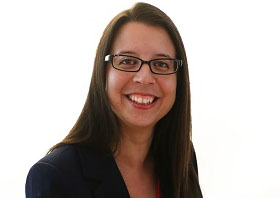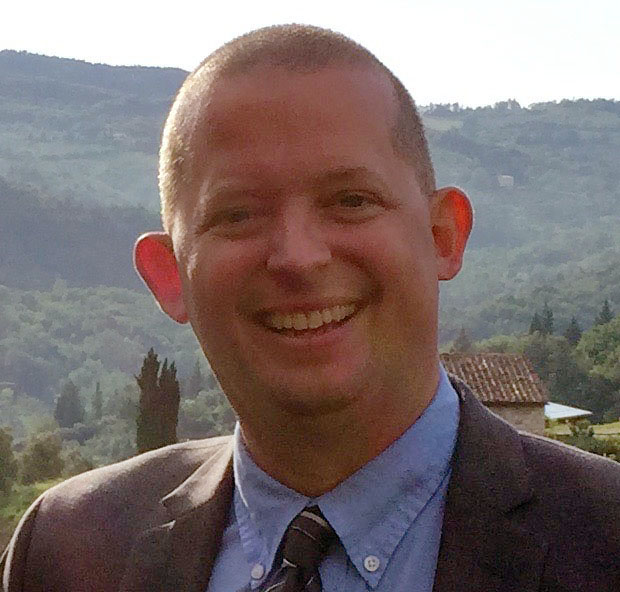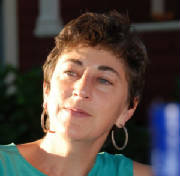Mike Robinson, assistant professor of psychology, is a co-author of a paper titled “The impact of junk-food diet during development on ‘wanting’ and ‘liking’.” The paper was recently published in The Behavioral Brain Research Journal. His co-authors include Wesleyan alumni Ellen Nacha Lesser ’15, Aime Arroyo-Ramirez ‘16, and Sarah Jingyi Mi ’16. The research looked at the developmental impacts of a chronic junk-food diet throughout development and how it blunts pleasure and affects motivation. The study found that chronic exposure to a junk-food diet resulted in large individual differences in weight gain (gainers and non-gainers) despite resulting in stunted growth as compared to chow-fed…
Kali Gross, professor of African American studies, details the 1887 crime of the disembodied torso found near a pond outside Philadelphia, and the subsequent, scandal-driven trial of Hannah Mary Tabbs and George Wilson, in her most recent book Hannah Mary Tabbs and the Disembodied Torso: A Tale of Race, Sex, and Violence in America, published February 2, 2016. Gross explains in an editorial published on her website, her use of “detectives' notes, trial and prison records, local newspapers, and other archival documents to reconstruct this ghastly who-done-it true crime in all its scandalous detail and in doing so, gives the…
Melanie Khamis, assistant professor of economics, assistant professor of Latin American studies, attended the Informality and Development Conference in Honor of Elinor Ostrom held at Indiana University on Oct. 22-23. Khamis, co-authored two papers presented at the conference including “Migration and the Informal Sector,” and “Risk Attitudes, Informal Employment and Wages: Evidence from a Transition Country." The conference was organized by faculty from Cornell University and Indiana University. It centered around the study of informality, the part of an economy that is neither taxed not monitored by any form of government—a subject area where Professor Ostrom, the first and only woman to have won…
Hilary Barth, associate professor of psychology, is a co-author of a paper titled, “How feedback improves children’s numerical estimation,” published in the August 2016 issue of the journal Psychonomic Bulletin and Review. Barth’s co-authors are former members of her Cognitive Development Lab, which include Shipra Kanjlia ’11 and Jennifer Garcia ’10, former lab managers Jessica Taggart and Elizabeth Chase, and former postdoctoral fellow Emily Slusser, PhD. The paper explores one theory of children’s cognitive development that there are fundamental developmental changes in the ways children think about numbers. This theory says numbers are arranged on a different mental scale for younger…
Erika Taylor, associate professor of chemistry, is a co-author of a paper titled, “Methyl transfer by substrate signaling from a knotted protein fold,” published in the August 2016 issue of the Nature Structural & Molecular Biology newsletter. The paper describes the protein TrmD, an enzyme that catalyzes tRNA modification, but unlike most proteins, TrmD has an "interesting knotted configuration, which is not common," Taylor said. The paper demonstrates that even in proteins with knotted configurations, the internal protein movements and dynamics are important for binding, signaling and catalysis. "This is exciting because one might expect knotted proteins to be more static in…
The Wesleyan Center for the Arts was featured in The Journal of the Society of Architectural Historians (JSAH), the main U.S. peer-reviewed scholarly journal for architectural history, in an article written by Joseph Siry, the Kenan Professor of the Humanities, professor of art history. The article, titled "Roche and Dinkeloo’s Center for the Arts at Wesleyan University: Classical, Vernacular, and Modernist Architecture in the 1960s," detailed the extensive history and creative motives behind the impressive 11-building complex. From 1962, under the presidency of Victor Butterfield (in office 1943–67), Wesleyan’s trustees committed the college to develop into a small university, and in 1964 they…
Situational judgment tests (SJTs) have become an increasingly important tool for predicting employee performance. In a recent study, Steven Stemler, associate professor of psychology, and two executives at pre-hire assessment firm Aspiring Minds asked current employees at several firms in India to review scenarios and then pick the “best” and “worst” choices from a set of options. The colleagues found a statistically significant correlation between job success and those who correctly identified the ‘worst’ answers to scenarios. Their results were surprising. "What we found in our research is that the ability to correctly identify the ‘worst’ response to a situation is a systematically different skill than the…
Sumarsam, University Professor of Music, and Andy McGraw PhD ’05 served as co-editors for Performing Indonesia, a Smithsonian Freer Sackler online publication of 16 articles on Indonesian music, dance and drama. Topics include choral singing of Indonesian and Malaysian Borneo; learning from American schoolchildren playing Balinese gamelan; the challenges of music sustainability in Lombok, Indonesia; gong evolution and practices, "the dancing goddess;" the acoustic concept of an American gamelan; musical kinship in the transnational Balinese gamelan community; and more. In addition to serving as an editor, Sumarsam co-authored the introduction to the publication, and delivered the keynote address titled, “Dualisms…
A book titled Organism and Environment (Oxford University Press, 2015) by evolutionary ecologist Sonia Sultan, professor of biology, professor of environmental studies, has been shortlisted for the Royal Society of Biology Award for Best Post-graduate Textbook.The winner will be announced later this month. In addition, Organism and Environment was named a "landmark volume" in Trends in Ecology and Evolution, and reviews are forthcoming in BioScience, Ecology, Evolution and Biology and Philosophy. In November, Sultan will speak about her research on developmental plasticity at the New Trends in Evolutionary Biology: Philosophical and Social Science Implications symposium held jointly by the Royal Society and the British Academy. Sultan is…
Although Professor of Art Tula Telfair's hyper-realistic landscape paintings are vividly detailed, the scenes she depicts are not found in nature; they are conjured from memory and imagination. Informed by her experiences growing up on four continents, Telfair produces fantastical visions with delicate brushstrokes and a mastery of color and light. Suggestive of waterfalls in Africa, deserts of the American Southwest, and ice floes in Antarctica, Telfair's art draws attention to the power and fragility of nature. Telfair's art, which has been featured in public collections around the world, will be showcased in a new book, Invented Landscapes, released on Oct. 18…
Meredith Hughes, assistant professor of astronomy, is the co-author of "Debris Disks in the Scorpius-Centaurus OB Association Resolved by Alma," published in The Astrophysical Journal, Vo. 828, No. 1. Jesse Lieman-Sifry '15 also is a co-author of the article. In addition, the international weekly journal of science Nature mentioned the article in a Sept. 8 publication. The co-authors explored the idea of carbon-monoxide potentially being in large-star disks. As explained in her abstract, “Stars twice the size of the sun can feature carbon-monoxide-rich gas disks around them, contrary to the expectation that ultraviolet radiation would have stripped away the gas.” Hughes used the…
Scott Higgins, professor of film and chair of the College of Film and the Moving Image, is the author of a new book titled, Matinee Melodrama: Playing with Formula in the Sound Serial, published in February 2016 by Rutgers University Press. Higgins newest work delves into the genre of adventure serials as a distinct art form, unwrapping its different elements and what makes adventure serials so successful. Intrigued by the active, dedicated fan culture, Higgins suggests that serial’s incoherent plotting and reliance on formula, as well as, the use of other cinematic elements such as, stock characters and cliffhangers, are…






